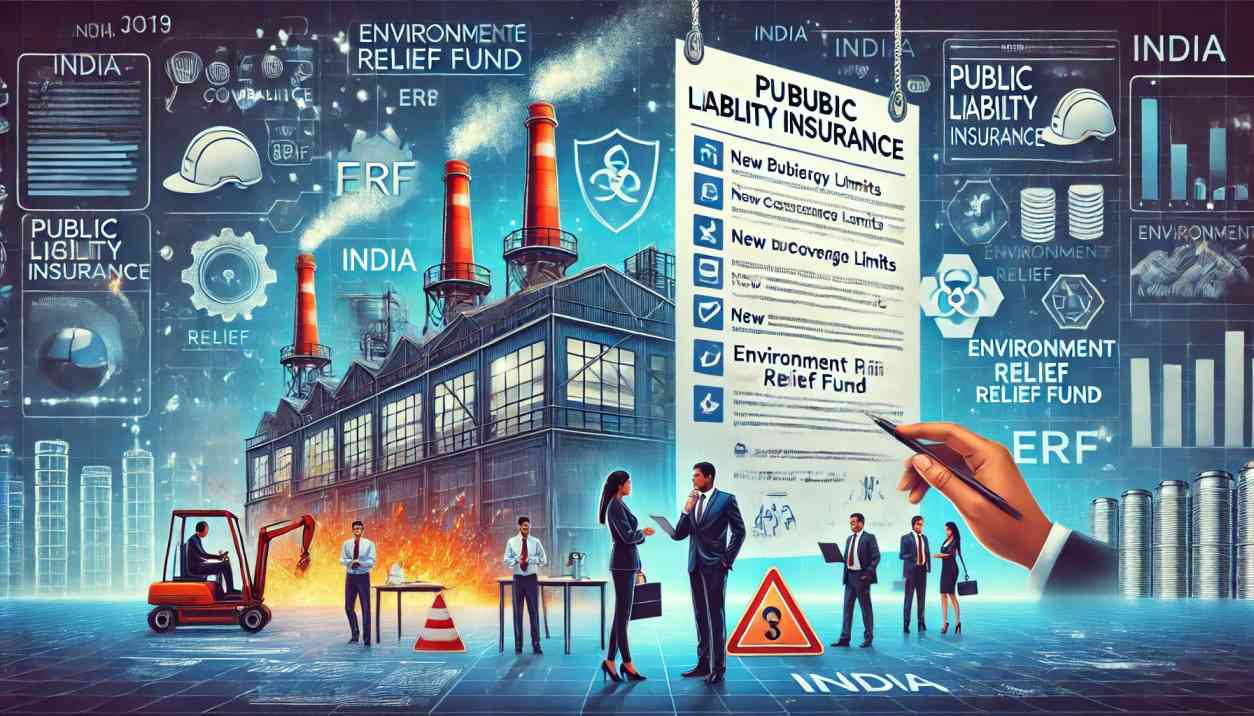Major amendments to the Public Liability Insurance Act (PLIA) increase insurance limits, introduce stricter compliance measures, and enhance compensation payouts.
Sweeping Changes in Public Liability Insurance
The Indian government has significantly amended the Public Liability Insurance Act (PLIA) through the Jan Vishwas Act and further revised the Rules on December 17, 2024. These updates:
- Substantially increase insurance coverage limits
- Ensure greater financial preparedness for businesses handling hazardous substances
- Expand compensation payouts for victims of industrial accidents
The amendments come in response to past industrial disasters, particularly the Bhopal Gas Tragedy of 1984, which underscored the need for stronger liability laws to protect the public.
Background: The Need for Stronger Public Liability Laws
The Bhopal Gas Tragedy, one of the world’s worst industrial disasters, exposed thousands to toxic methyl isocyanate gas, resulting in:
- Over 15,000 deaths
- Half a million survivors suffering from respiratory and other health issues
In response, PLIA was enacted in 1991 to mandate that businesses handling hazardous substances provide immediate compensation to victims of industrial accidents. The law required companies to:
- Maintain a public liability insurance policy to cover potential third-party claims.
- Contribute to the Environment Relief Fund (ERF), which serves as an excess protection layer in case insurance limits are exhausted.
What’s Changing Under the New Rules?
1. Increased Insurance Limits and Compensation
Previously, the insurance limits were capped at:
- Rs 5 crore per accident
- Rs 15 crore per policy year (covering up to three accidents annually)
The 2024 amendments have dramatically raised these limits, with coverage now linked to the paid-up capital of the company handling hazardous materials.
2. Stricter Compliance Measures
The new rules introduce Section 5A, which requires:
- Companies to publicly inform victims of their right to claim compensation in case of an accident.
- Stricter monitoring of insurance compliance, with fines up to twice the annual premium for non-compliance.
This places a greater legal responsibility on businesses to ensure that compensation reaches affected individuals.
3. Strengthening the Environment Relief Fund (ERF)
- The ERF now holds an estimated corpus of Rs 950-1,000 crore, built through years of mandatory contributions by businesses.
- Companies must match their insurance premiums with an equivalent contribution to the ERF, significantly increasing available funds for compensation.
- New provisions allow up to 10% of the ERF to be used for restoring environmentally damaged public property, as requested by central or state pollution control boards.
However, these changes may strain the ERF if large-scale industrial accidents lead to massive payouts.
Impact on Key Stakeholders
For Insurers:
- Higher premiums: With increased liability exposure, insurers are expected to raise premium costs to reflect the larger payout risks.
- Lower defense costs: Since PLIA is a statutory liability, insurers will not bear legal defense expenses, reducing financial strain.
- Possible decline in traditional public liability policies: Many businesses may rely solely on statutory PLIA coverage, reducing demand for common law public liability policies under Commercial General Liability (CGL) insurance.
For Businesses (The Insureds):
- Insurance limits are now linked to paid-up capital rather than risk exposure, which may create gaps in coverage for highly hazardous industries with smaller capital bases.
- Businesses with high paid-up capital may have flexibility in choosing their ERF excess limits, helping optimize premium costs.
- Companies must now actively publicize compensation rights to accident victims, increasing legal compliance responsibilities.
For the Government and Public:
- The use of ERF funds for environmental restoration ensures polluters pay for damages, but may reduce the fund’s availability for accident compensation.
- The new rules fail to expand PLIA coverage beyond hazardous industries, meaning disasters like the Morbi bridge collapse or Ghatkopar hoarding crash remain outside the insurance framework, forcing the government to rely on taxpayer money for victim compensation.
Challenges and Future Considerations
While the revised Public Liability Insurance framework strengthens financial protection, certain challenges remain:
1. Balancing Premium Costs – Higher insurance limits mean higher premiums, which may increase the financial burden on businesses.
2. ERF Sustainability – Large payouts could deplete the ERF, requiring alternative funding mechanisms to maintain long-term viability.
3. Need for Broader Coverage – Expanding mandatory public liability insurance to non-hazardous industries could provide wider protection against industrial disasters.
Conclusion: A Step Forward, but More Reforms Needed
The amendments to PLIA represent a major leap in public liability protection in India, ensuring higher compensation payouts, stricter compliance, and better financial safeguards. However, industry stakeholders must closely monitor premium adjustments and ERF sustainability to ensure long-term effectiveness.
For more updates on public liability insurance and regulatory changes, stay tuned.


